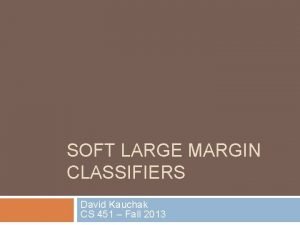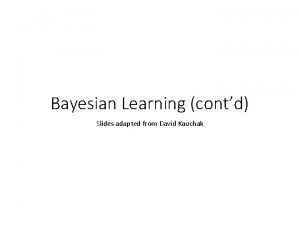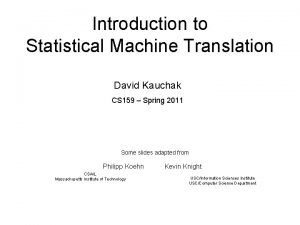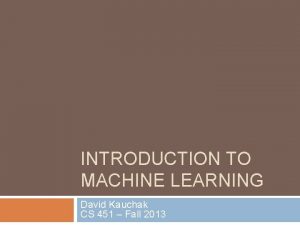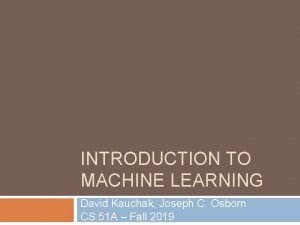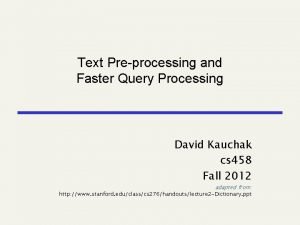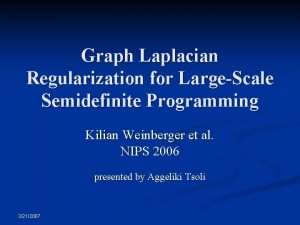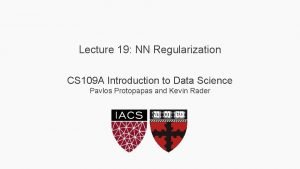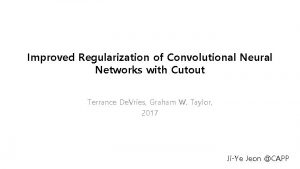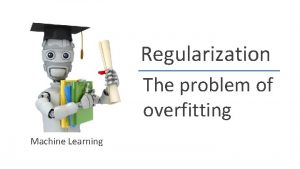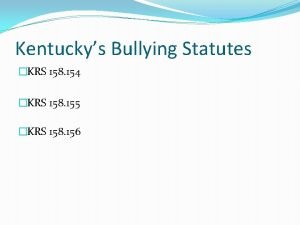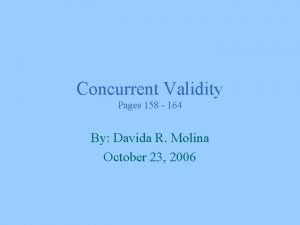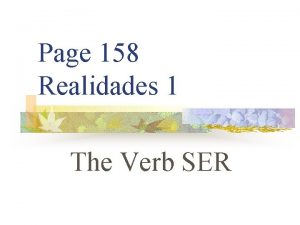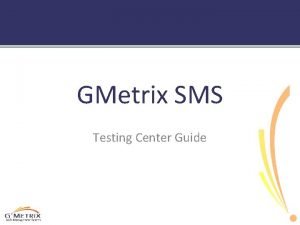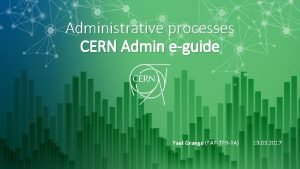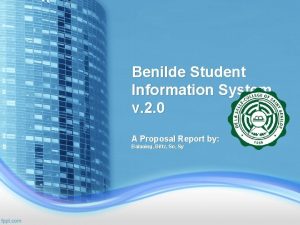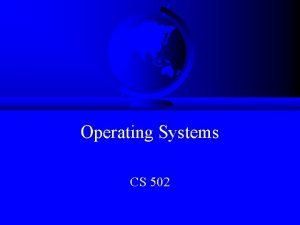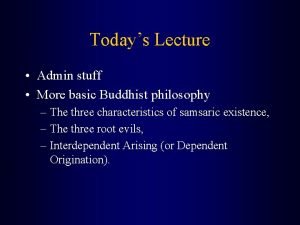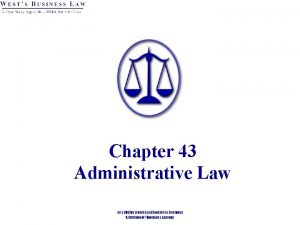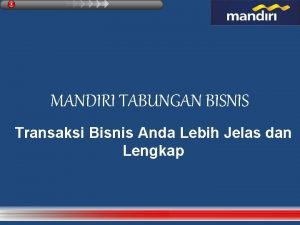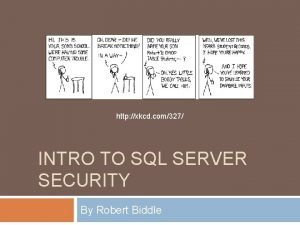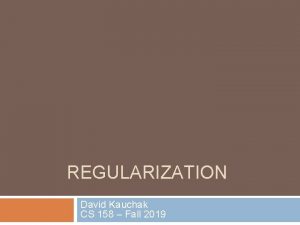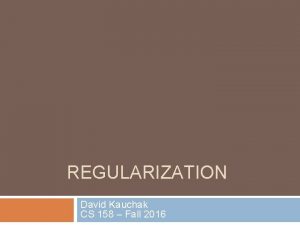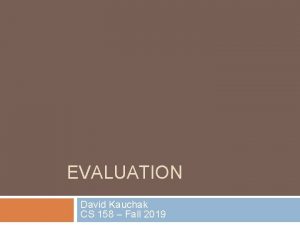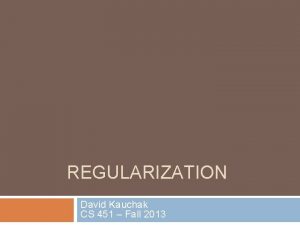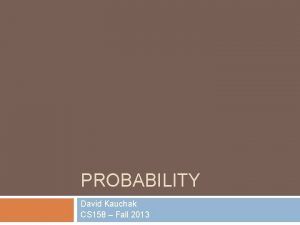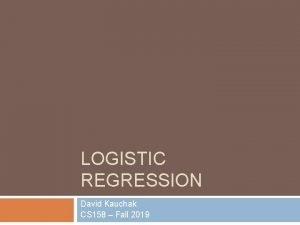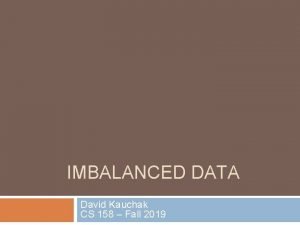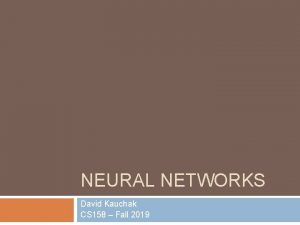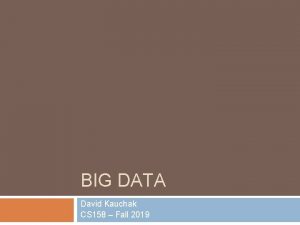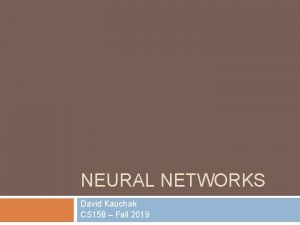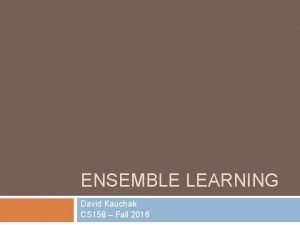REGULARIZATION David Kauchak CS 158 Fall 2019 Admin























































- Slides: 55

REGULARIZATION David Kauchak CS 158 – Fall 2019

Admin Assignment 3 back Assignment 5 Course feedback

Schedule Midterm next week, due Friday (more on this in 1 min) Assignment 6 due Friday before fall break (~ 2 weeks from now) Focus on studying for the midterm, but at least take a look at this next week

Midterm Download when you’re ready to take it (available by end of day Monday) 2 hours to complete Must hand-in (or e-mail in) by 11: 59 pm Friday Oct. 11 Can use: class notes, your notes, the book, your assignments and Wikipedia. You may not use: your neighbor, anything else on the web, etc.

What can be covered Anything we’ve talked about in class Anything in the reading (these are not necessarily the same things) Anything we’ve covered in the assignments

Midterm topics Machine learning basics - different types of learning problems feature-based machine learning data assumptions/data generating distribution Classification problem setup Proper experimentation - train/dev/test evaluation/accuracy/training error optimizing hyperparameters

Midterm topics Learning algorithms Decision trees K-NN Perceptron Gradient descent - Algorithm properties training/learning - - rational/why it works classifying hyperparameters avoiding overfitting algorithm variants/improvements

Midterm topics Geometric view of data - distances between examples decision boundaries Features - example features removing erroneous features/picking good features challenges with high-dimensional data feature normalization Other pre-processing - outlier detection

Midterm topics Comparing algorithms n-fold cross validation - leave one out validation bootstrap resampling t-test - imbalanced data evaluation - - precision/recall, F 1, AUC subsampling oversampling weighted binary classifiers

Midterm topics Multiclassification Modifying existing approaches Using binary classifier - - OVA AVA Tree-based micro- vs. macro-averaging Ranking - using binary classifier using weighted binary classifier

Midterm topics Gradient descent 0/1 loss Surrogate loss functions Convexity minimization algorithm regularization - different regularizers p-norms Misc - good coding habits Java. Doc

Midterm general advice 2 hours goes by fast! Don’t plan on looking everything up - Make sure you understand the key concepts Don’t spend too much time on any one question - - Lookup equations, algorithms, random details Skip questions you’re stuck on and come back to them Watch the time as you go Be careful on the T/F questions For written questions - think before you write make your argument/analysis clear and concise

How many have you heard of? (Ordinary) Least squares Ridge regression Lasso regression Elastic regression Logistic regression

Model-based machine learning 1. 2. 3. pick a model pick a criteria to optimize (aka objective function) develop a learning algorithm Find w and b that minimize the 0/1 loss

Model-based machine learning 1. 2. pick a model pick a criteria to optimize (aka objective function) use a convex surrogate loss function 3. develop a learning algorithm Find w and b that minimize the surrogate loss

Surrogate loss functions 0/1 loss: Hinge: Exponential: Squared loss:

Finding the minimum You’re blindfolded, but you can see out of the bottom of the blindfold to the ground right by your feet. I drop you off somewhere and tell you that you’re in a convex shaped valley and escape is at the bottom/minimum. How do you

Gradient descent � pick a starting point (w) � repeat until loss doesn’t decrease in any dimension: pick a dimension move a small amount in that dimension towards decreasing loss (using the derivative)

Perceptron learning algorithm! repeat until convergence (or for some # of iterations): for each training example (f 1, f 2, …, fm, label): if prediction * label ≤ 0: // they don’t agree for each wj: Note: for gradient descent, we always update wj = wj + fj*label b = b + label or where

The constant learning rate label prediction When is this large/small?

The constant label prediction If they’re the same sign, as the predicted gets larger there update gets smaller If they’re different, the more different they are, the bigger the update

One concern loss We’re calculating this on the training set We still need to be careful about overfitting! w The min w, b on the training set is generally NOT the min for the test How did we deal with this for the perceptron algorithm? set

Overfitting revisited: regularization A regularizer is an additional criterion to the loss function to make sure that we don’t overfit It’s called a regularizer since it tries to keep the parameters more normal/regular It is a bias on the model that forces the learning to prefer certain types of weights over others

Regularizers Should we allow all possible weights? Any preferences? What makes for a “simpler” model for a linear model?

Regularizers Generally, we don’t want huge weights If weights are large, a small change in a feature can result in a large change in the prediction Also gives too much weight to any one feature Might also prefer weights of 0 for features that aren’t useful

Regularizers How do we encourage small weights? or penalize large weights

Common regularizers sum of the weights sum of the squared weights What’s the difference between these?

Common regularizers sum of the weights sum of the squared weights Squared weights penalizes large values more Sum of weights will penalize small values more

p-norm sum of the weights (1 -norm) sum of the squared weights (2 -norm) p-norm Smaller values of p (p < 2) encourage sparser vectors Larger values of p discourage large weights more

p-norms visualized lines indicate penalty = 1 w 2 For example, if w 1 = 0. 5 p w 2 1 0. 5 1. 5 0. 75 2 0. 87 3 0. 95 ∞ 1

p-norms visualized all p-norms penalize larger weights p < 2 tends to create sparse (i. e. lots of 0 weights) p > 2 tends to like similar weights

Model-based machine learning 1. 2. 3. pick a model pick a criteria to optimize (aka objective function) develop a learning algorithm Find w and b that minimize

Minimizing with a regularizer We know how to solve convex minimization problems using gradient descent: If we can ensure that the loss + regularizer is convex then we could still use gradient descent: make convex

Convexity revisited One definition: The line segment between any two points on the function is above the function Mathematically, f is convex if for all x 1, x 2: the value of the function at some point between x 1 and x 2 the value at some point on the line segment between x 1 and x 2

Adding convex functions Claim: If f and g are convex functions then so is the function z=f+g Prove: Mathematically, f is convex if for all x 1, x 2:

Adding convex functions By definition of the sum of two functions: Then, given that:

Adding convex functions By definition of the sum of two functions: Then, given that: We know: So:

Minimizing with a regularizer We know how to solve convex minimization problems using gradient descent: If we can ensure that the loss + regularizer is convex then we could still use gradient descent: convex as long as both loss and regularizer are convex

p-norms are convex for p >= 1

Model-based machine learning 1. 2. 3. pick a model pick a criteria to optimize (aka objective function) develop a learning algorithm Find w and b that minimize

Our optimization criterion Loss function: penalizes examples where the prediction is different than the label Regularizer: penalizes large weights Key: this function is convex allowing us to use gradient des

Gradient descent � pick a starting point (w) � repeat until loss doesn’t decrease in any dimension: pick a dimension move a small amount in that dimension towards decreasing loss (using the derivative)

Some more maths … (some math happens)

Gradient descent � pick a starting point (w) � repeat until loss doesn’t decrease in any dimension: pick a dimension move a small amount in that dimension towards decreasing loss (using the derivative)

The update regularization learning rate direction to update constant: how far from wrong What effect does the regularizer have?

The update regularization learning rate direction to update constant: how far from wrong If wj is positive, reduces wj If wj is negative, increases wj moves wj towards 0

L 1 regularization

L 1 regularization learning rate direction to update constant: how far from wrong What effect does the regularizer have?

L 1 regularization learning rate direction to update constant: how far from wrong If wj is positive, reduces by a constant moves wj towards 0 If wj is negative, increases by a constantregardless of magnitud

Regularization with p-norms L 1: L 2: Lp: How do higher order norms affect the weights?

Model-based machine learning develop a learning algorithm Find w and b that minimize Is gradient descent the only way to find w and b? No! Many other ways to find the minimum. Some are don’t even require iteration Whole field called convex optimization

Regularizers summarized L 1 is popular because it tends to result in sparse solutions (i. e. lots of zero weights) However, it is not differentiable, so it only works for gradient descent solvers L 2 is also popular because for some loss functions, it can be solved directly (no gradient descent required, though often iterative solvers still) Lp is less popular since they don’t tend to shrink the weights enough

The other loss functions Without regularization, the generic update is: where exponential hinge loss squared error

Many tools support these different combinations Look at scikit learning package: http: //scikit-learn. org/stable/modules/sgd. html

Common names (Ordinary) Least squares: squared loss Ridge regression: squared loss with L 2 regularization Lasso regression: squared loss with L 1 regularization Elastic regression: squared loss with L 1 AND L 2 regularization Logistic regression: logistic loss
 David kauchak
David kauchak David kauchak
David kauchak Translation process
Translation process Cs 451
Cs 451 David kauchak
David kauchak David kauchak
David kauchak David kauchak
David kauchak Graph laplacian regularization
Graph laplacian regularization Nn regularization
Nn regularization Cutout regularization
Cutout regularization Regularization andrew ng
Regularization andrew ng Introduction to teaching: becoming a professional
Introduction to teaching: becoming a professional Cs 158
Cs 158 Krs 158
Krs 158 Concurrent validity nedir
Concurrent validity nedir Ir + a + infinitive (p. 206)
Ir + a + infinitive (p. 206) Scp 158
Scp 158 The verb ser page 158
The verb ser page 158 Admin stuff
Admin stuff Phpmy admin
Phpmy admin Kde administration code training
Kde administration code training _vti_bin exploit
_vti_bin exploit Www.gmetrix.net
Www.gmetrix.net Higher admin
Higher admin Srdm ncvvo
Srdm ncvvo Admin eguide cern
Admin eguide cern Epson print admin
Epson print admin Business admin level 3 project presentation examples
Business admin level 3 project presentation examples Nfon workforce management
Nfon workforce management Aon gate candidate login
Aon gate candidate login Invitations with polling
Invitations with polling Benilde sis admin
Benilde sis admin National 5 admin and it resources
National 5 admin and it resources Admin stuff
Admin stuff Laserfiche connector
Laserfiche connector Callmanager.rcn
Callmanager.rcn Admin stuff
Admin stuff Ceowin
Ceowin Admin stuff
Admin stuff Athens admin
Athens admin Portal.office 365.com
Portal.office 365.com National 5 admin and it resources
National 5 admin and it resources Fedex ship manager admin password
Fedex ship manager admin password Admin
Admin Biaya adm kartu mandiri
Biaya adm kartu mandiri Aikido/admin/auth
Aikido/admin/auth Pengertian administrasi pembukuan
Pengertian administrasi pembukuan Admin english with fun
Admin english with fun Quizizz. com/admin
Quizizz. com/admin Msdn admin
Msdn admin Lcmbiar file
Lcmbiar file Banner admin pages
Banner admin pages Camunda admin
Camunda admin Sysadmin xkcd
Sysadmin xkcd Surface hub local admin account
Surface hub local admin account Smartermeasure admin login
Smartermeasure admin login
